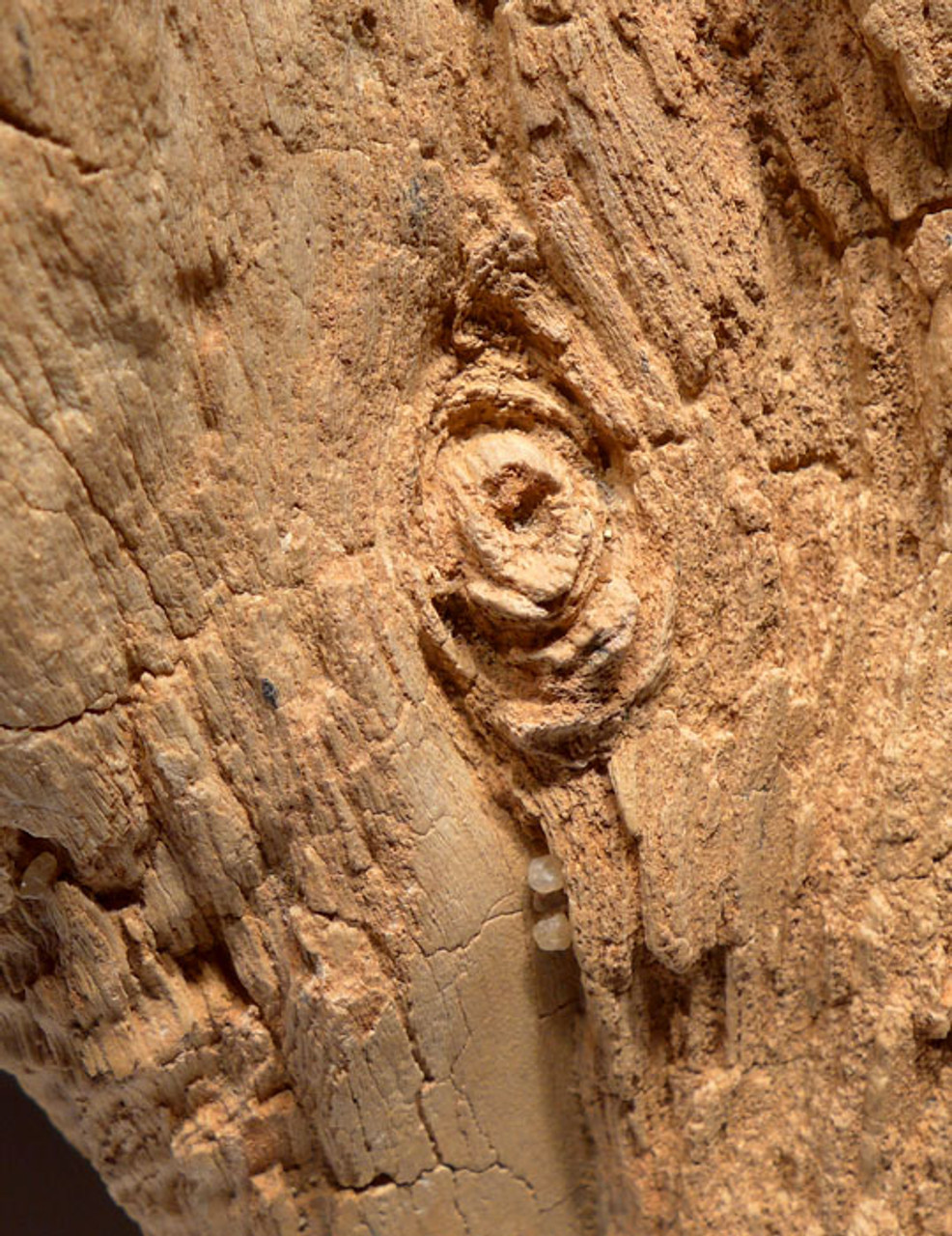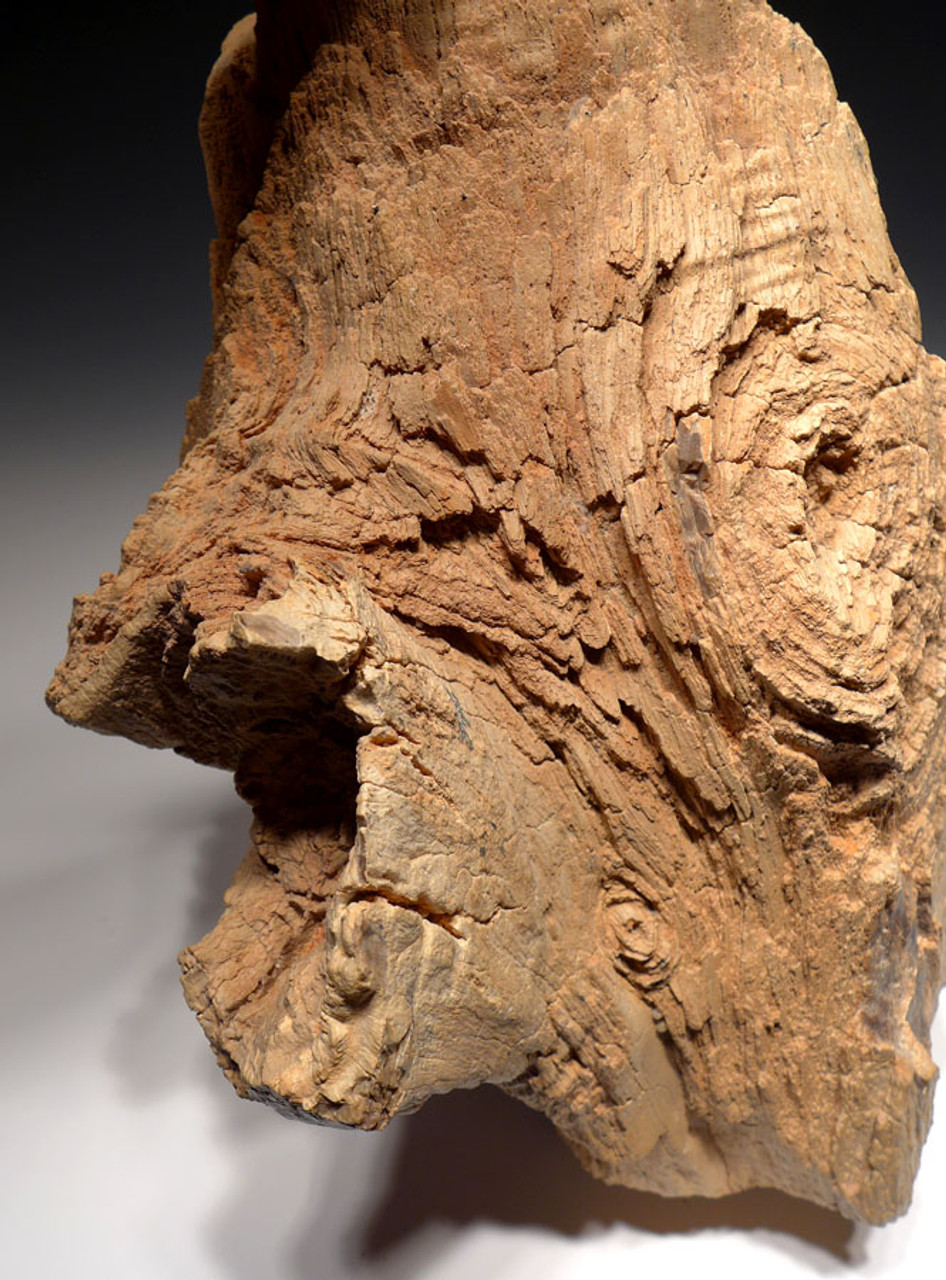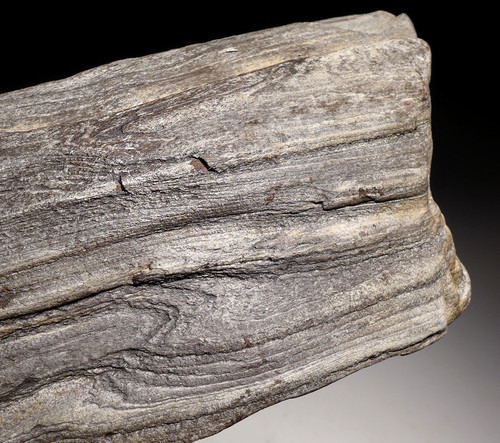Product Description
This unusually large portion of a split hollow tree log dates back to the days of the dinosaurs and has been petrified in solid stone yet, retains every minute detail of when it was once wood. The EXTREME RARITY of this specimen cannot be overstated - it comes from the Northwest Sahara Desert! Such a large lifelike petrified log from this region is a true prize find. The Sahara Desert used to be lush and green with forests, plains and swamps. Early human prehistoric stone tools made of petrified wood like this, have been found that date from the Acheulian to the Neolithic Periods, in the region from where this fossil log was found. There are areas in the North Sahara that show multiple petrified trees that are the remains of entire forests once alive in prehistory.
With this MUSEUM-CLASS example, you have every desirable feature of petrified logs - large fibrous texture and multiple gnarly tree knots. There is one major branch that is partially hollow and leads into what was once the inside of the tree, showing a split wood interior. There are very rare features that are not seen in your typical petrified wood. If you were only allowed to look at it and not pick it up to feel its weight, you would absolutely swear it was modern wood except for the unique color! Not only immensely rare, this is an amazingly intriguing display specimen, loaded with architectural aesthetics. How many petrified wood collections include a fossilized log from the Sahara Desert??? Irresistible to touch! When will you ever see again for sale a major petrified log full of knots and with these features FROM THIS REGION OF THE WORLD!
Petrified wood in its natural form is MUCH LESS prevalent on the market compared to sliced and polished examples. Unfortunately, when such modifications are done to the specimen, the fossil value of the wood is lessened and the piece becomes more of a pretty mineral showpiece rather than an educational and intriguing display fossil because the natural interior and exterior appearance has been modified or in some cases, destroyed.
SEE MORE PETRIFIED WOOD AND PLANT FOSSILS
HISTORY
Petrified wood forms when real wood lies buried underground and its organic structure is gradually replaced with hard mineral. This petrification requires rapid burial of the wood to prevent normal decay. This can happen in different ways. A flooding river can have bury the forest floor under a layer of sand and silt, for example. Another circumstance could occur when forests are covered by volcanic ash. After burial, mineralized groundwater begins to percolate through the wood, coating cell walls and filling the intercellular cavities with stone. In some cases, the entire log is converted to stone and is solid like a cast of the original piece. In other cases, the delicate cellular structures are preserved along with growth rings, bark and knots such that the petrified wood exactly resembles modern wood yet is heavy as stone when held, and clinks like porcelain. Such detailed preservation is possible because the organic wood molecules become coated and surrounded with smaller silica molecules. Small amounts of impurities in the mineralized water add color to the fossilized wood. The hues of yellow, brown and red indicate iron while black and purple are derived from carbon or manganese.
 US DOLLAR
US DOLLAR
 EURO
EURO
 AUSTRALIAN DOLLAR
AUSTRALIAN DOLLAR
 CANADIAN DOLLAR
CANADIAN DOLLAR
 POUND STERLING
POUND STERLING






















